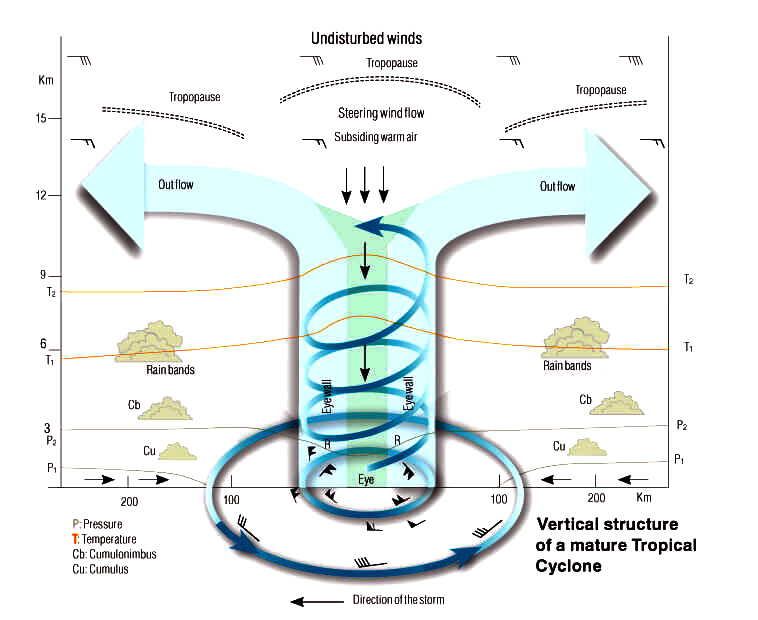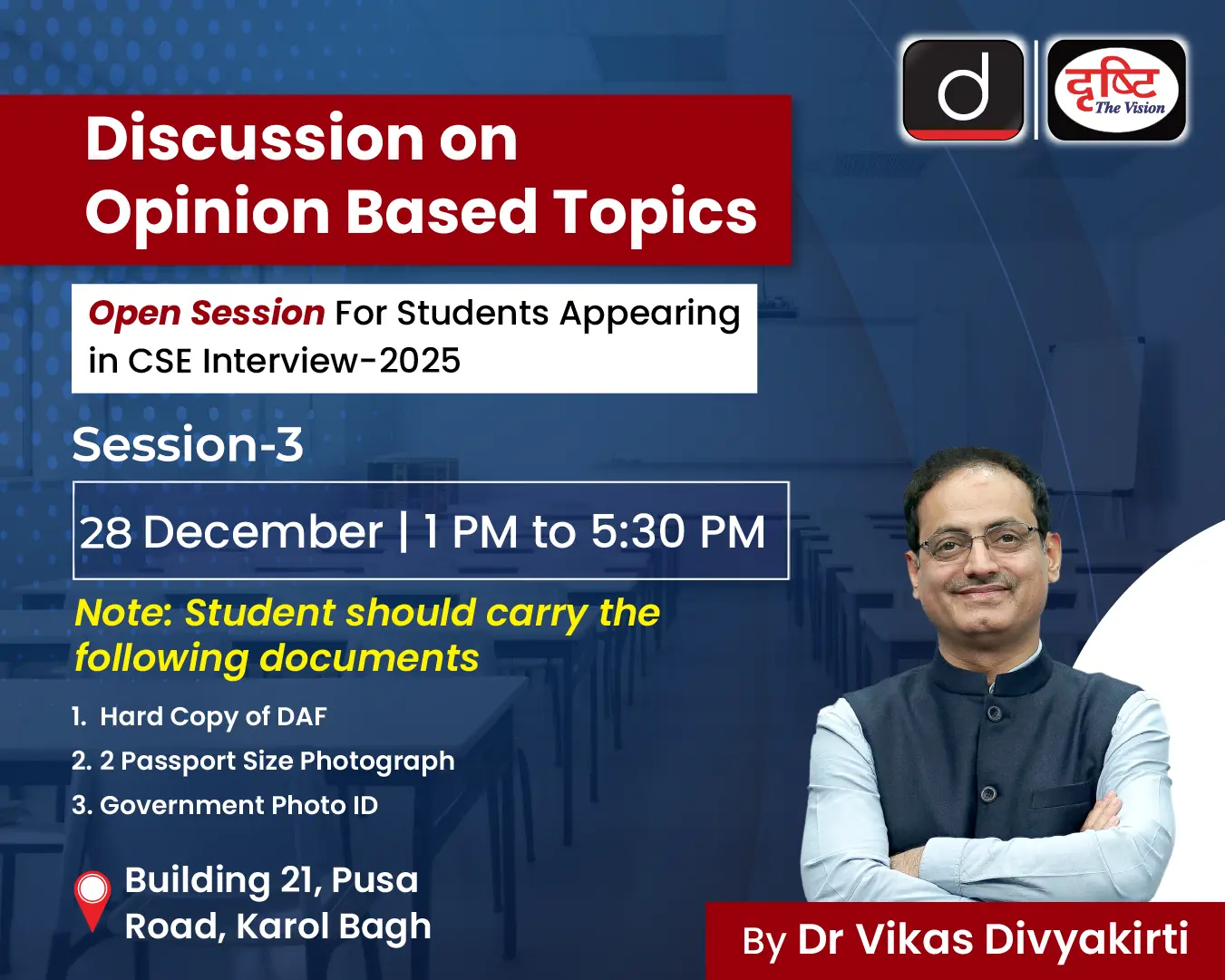Biodiversity & Environment
Cyclone Management Framework
- 09 Dec 2021
- 9 min read
Why in News
Recently, Cyclone Jawad has hit the east coast of India particularly the State of Odisha and Andhra Pradesh.
- Although the cyclone weakened and didn’t cause much damage, it highlighted that India’s cyclone management approach was largely based on evacuation.
- Thus, India’s cyclone management must incorporate Mitigation and Preparedness measures. Mitigation means measures taken prior to the impact of a disaster to minimize its effects.
Key Points
- About Cyclone: Cyclones are rapid inward air circulation around a low-pressure area. The air circulates in an anticlockwise direction in the Northern hemisphere and clockwise in the Southern hemisphere.
- Classification of Cyclone: There are two types of cyclones:
- Tropical cyclones: Tropical cyclones develop in the region between the Tropics of Capricorn and Cancer.
- They are large-scale weather systems developing over tropical or subtropical waters, where they get organized into surface wind circulation.
- The World Meteorological Organization uses the term 'Tropical Cyclone’ to cover weather systems in which winds exceed ‘Gale Force’ (minimum of 63 km per hour)
- Extra Tropical cyclones: They are also called Temperate cyclones or middle latitude cyclones or Frontal cyclones or Wave Cyclones.
- Extra tropical cyclones occur in temperate zones and high latitude regions, though they are known to originate in the Polar Regions.
- Tropical cyclones: Tropical cyclones develop in the region between the Tropics of Capricorn and Cancer.
Case Study of India’s Cyclone Management
- Cyclone Phailin & Fani: India has gained much recognition globally for its swift action during some of the major cyclones in the recent past such as Cyclone Phailin (2012), Fani (2019), etc.
- The state government of Odisha has started undertaking mega evacuation drives in the aftermath of the Super Cyclone in 1999.
- For example,more than a million people were evacuated for both these events.
- The evacuations were considered to be the primary reason for the limited human deaths reported.
- However, there is an inadequate focus on response aspects other than evacuation, such as measures to minimize crop damage, assistance for quick harvest, adequate relief and timely distribution of post-cyclone assistance such as for damaged houses, etc.
- The state government of Odisha has started undertaking mega evacuation drives in the aftermath of the Super Cyclone in 1999.
- Cyclone Jawad: Too little attention being given to key disaster response functions other than evacuation.
- The current threat from Cyclone Jawad, which comes at a time when crops in most parts are nearing harvest.
- There was distress selling and premature harvesting because of the cyclone.
Mitigation and Preparedness Measures for Cyclone
- Hazard Mapping: Hazard mapping for cyclones represents the results of cyclone hazard assessment on a map, showing the frequency/probability of occurrences of various intensities or durations.
- Land Use Planning: Policies should be in place to regulate land use and enforcement of building codes.
- Vulnerable areas should be kept for parks, grazing grounds or flood diversion instead of human settlements.
- Engineered Structures: Some examples of general good construction practice include:
- Constructing buildings on stilts or on earthen mounds.
- Buildings should be wind and water resistant.
- Buildings storing food supplies should be protected against the winds and water.
- Cyclone Shelters: Cyclone Shelters are necessary for areas vulnerable to recurrent cyclones.
- The construction of cyclone shelters requires substantial funding, therefore, generally linked to support from government or external donors.
- For construction of cyclone shelters, the most appropriate sites should be selected, using the Geographical Information System.
- Flood Management: Flooding will result from a cyclonic storm. Storm surges will flood the coastal areas. Heavy rains will bring in flash floods.
- Embankments along the rivers, sea walls along the coasts may keep water away from the flood plains.
- Water flow can be regulated through construction of reservoirs, check dams and alternate drainage channels/routes.
- Mangrove Plantation: Mangroves protect the coastal area from storm surge and wind accompanied with cyclones.
- Communities should participate in the mangrove plantation which could be organized by the local authorities, NGOs or the community itself.
- Mangroves also help in erosion-control and coastal conservation.
- Public Awareness Generation: Public awareness through education is the key to saving many lives. It has been proved that most of the damage to lives and livelihoods are due to lack of public education and awareness.
- End to End Warning System: There is a need for an end to end early warning which will enable people at all levels to respond quickly and effectively.
- The community should be well aware of the warning system, the warning signals and the source where they can get the early warning of cyclones.
- Community Participation: Since the local people are the persons best aware of the strengths and weaknesses of their area, location, culture and customs, some mitigation measures should be developed by the community themselves.
- These community mitigation activities can be achieved with the support from government and other civil society organizations.
Governmental Initiatives for Cyclone Management in India
- National Cyclone Risk Mitigation Project:
- India initiated this project to undertake structural and non-structural measures to mitigate the cyclone’s effects.
- The aim of the project is to protect the vulnerable local communities from the impact of cyclones and other hydro-meteorological calamities.
- After the formation of National Disaster Management Authority (NDMA), the management of the Project was transferred to NDMA in September, 2006.
- Integrated Coastal Zone Management (ICZM) Project:
- The Ministry of Environment, Forest and Climate Change (MoEFCC) has unveiled the draft Environmental and Social Management Framework (ESMF) for Integrated coastal management.
- The draft plan will dictate how prospective infrastructure projects would be assessed for clearance by laying out guidelines for coastal States.
- Coastal Regulation Zones (CRZ): The coastal areas of seas, bays, creeks, rivers, and backwaters which get influenced by tides up to 500 m from the high tide line (HTL) and the land between the low tide line (LTL) and the high tide line have been declared as coastal regulation zone (CRZ) in 1991.
- The coastal regulation zones have been declared by the Ministry of Environment, Forest and Climate change under the Environment Protection Act 1986.
- Color Coding of Cyclones:
- It is a weather warning that is issued by the India Meteorological Department (IMD) to alert people ahead of natural hazards.
- The four colors used by IMD are Green, Yellow, Orange, and Red.








